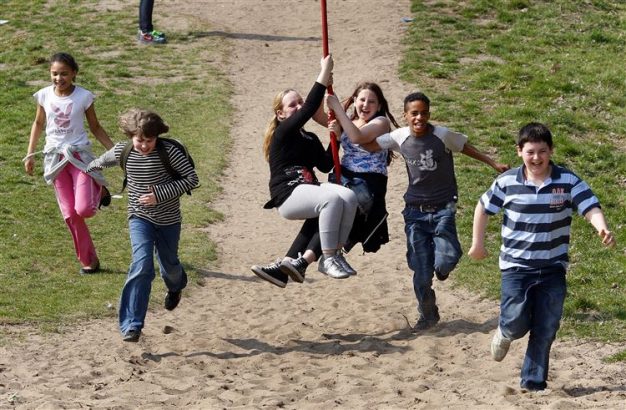
Good relationships with family and friends reduce risky behaviour in children
Families have the potential to be the most powerful protective force in the lives of children and youth. Healthy family relationships may even prevent children and adolescents from engaging in drug abuse, delinquency and risky sexual behaviours.
Relationship between the welfare of the teenager and family structure and stable environment is considered to be crucial for the success of young people through this transformation process during adolescence, according to Professor Sigrún Júlíusdóttir at the University of Iceland in her book Families at the turn of the century (2001).
Alcohol and drug abuse prevention
Today’s teens, as individuals, are facing major changes: mentally, socially and physically. This period is characterised in many ways by the difficulties of transition between childhood the responsibilities of adulthood. Self-image is influenced by what the teenager sees in the changes in their body during this developmental process. As childhood ends, a new role demands increased maturity and responsibility which may cause adolescents to display behaviour that can cause themselves and others harm.
At this time teenagers are often sensitive to relationships with their parents and family and, at the same time, form relationships with other groups outside the family. Contact with other teenagers plays a large part in their development and behaviour, both positively and negatively. Friendships in adolescence can be particularly influential on individual choices.
For many teens, illicit substance use and abuse become part of the landscape of their teenage years. Although most adolescents who use drugs do not progress to become drug abusers, or drug addicts in adulthood, drug use in adolescence is a very risky proposition. Even small degrees of substance abuse (for example, alcohol, marijuana, and inhalants) can have negative consequences. Typically, school and relationships, notably family relationships, are among the life areas that are most influenced by drug use and abuse.
Risk factors
The risk factors are that the teenager could be drawn into drug use. Often this includes difficult family circumstances such as alcohol and drug use by their parents with substance abuse maybe being hereditary. There may be illness, neglect or violence in the home. Poor relationships with parents is one of the risk factors. It is important for parents to know and understand their teenage child and keep track of the groups they are involved with. This makes it easier for parents to intervene earlier if their teenage child is getting into trouble.
The main risk is peer pressure to join a group and join in with alcohol and or drug abuse. Teenagers fear rejection from their peers more than punishment from their parents. Other risk factors that can also be taken into consideration is when the teenager is being bullied or teased about their size and that boys enter puberty later than girls. These factors often cause the teenager stress as they feel they do not fit in with their peer group or are not accepted by them and therefore seek out marginalized groups. A long-running study of British youth reveals that the people who experienced frequent bullying at age 13 had double the risk of developing clinical depression at age 18, compared with people who were never bullied.
Prevention education
Any change affects individuals, as they need to adapt and change to new circumstances. Connection and communication in adolescents is of particular interest as they discuss this transformation period. Changes are needed in many areas of life. Families change significantly while the teenager needs their parents to be constant, but at the same time allowing them to increase their independence outside the family. At the same time, their relationships with peers of both sexes are strengthening.
The independence of an adolescent develops not in isolation but it grows during the changes while at the same time remaining in close communication with the parents. Both teens and parents experience stress associated with these changes and the need to adapt to changing circumstances. Many studies show the relationship between the welfare of the teenager and family structure and stable environment is considered to be crucial for the success of young people through this transformation process during adolescence. The sooner targeted prevention education is provided for children and adolescents, the greater the chance of a better quality of life in young adulthood.
References:
(McCarty, Zimmerman, DiGuiseppe & Christakis, 2005; Sigrún Júlíusdóttir, 2001)
McCarty, C. A., Zimmerman, F. J., DiGuiseppe, D. L. & Christakis, D.A. (2005). Parental emotional support and subsequent internalizing and externalizing problems among children. Journal of Developmental & Behavioral Pediatrics, 26(4):267–275.
Sigrún Júlíusdóttir. (2001). Fjölskyldur við aldahvörf. Náin tengsl og uppeldisskilyrði barna. [Families at the turn of the century. Intimate relations and children‘s upbringing conditions]. Reykjavík: Háskólaútgáfan.




